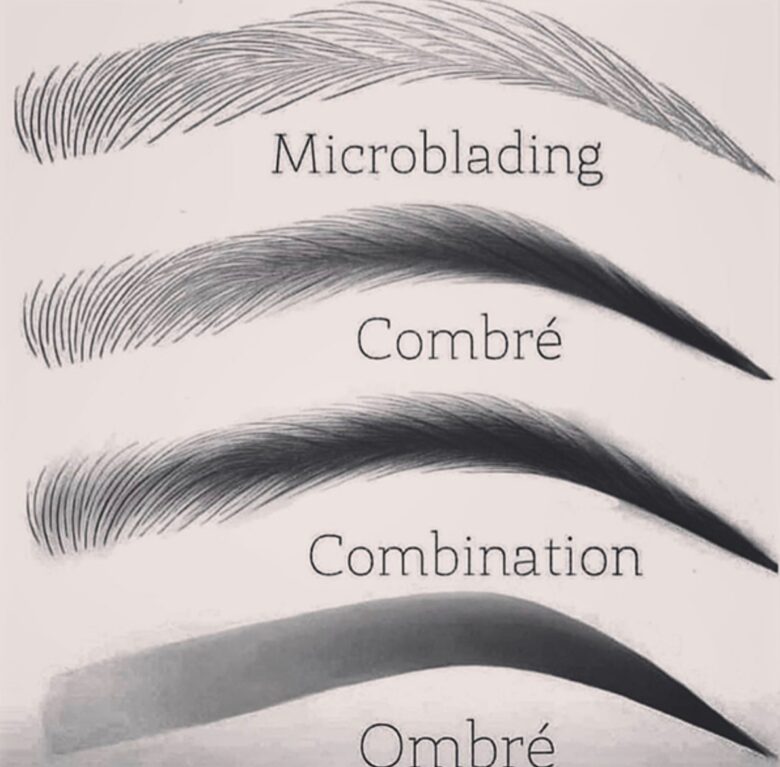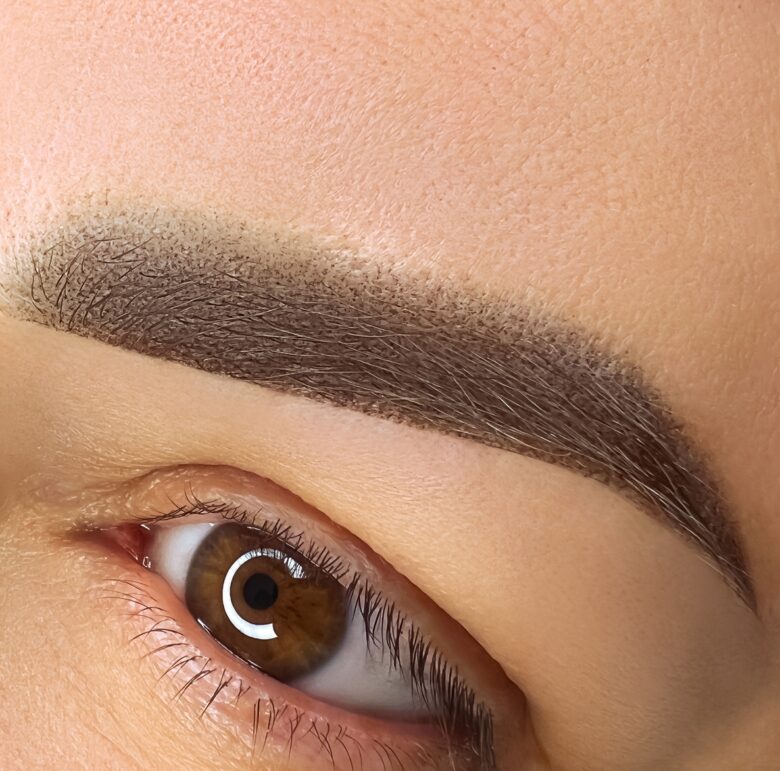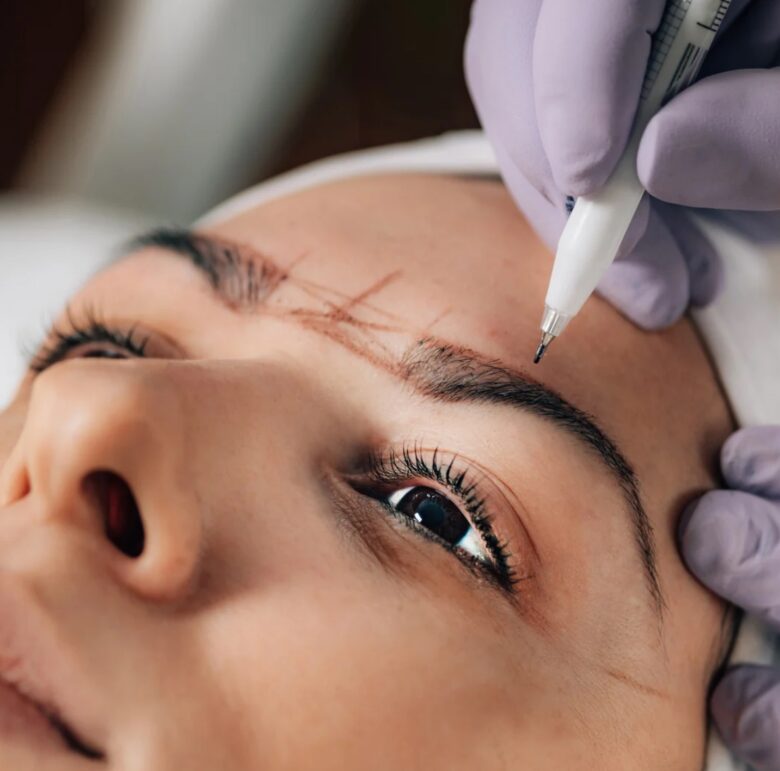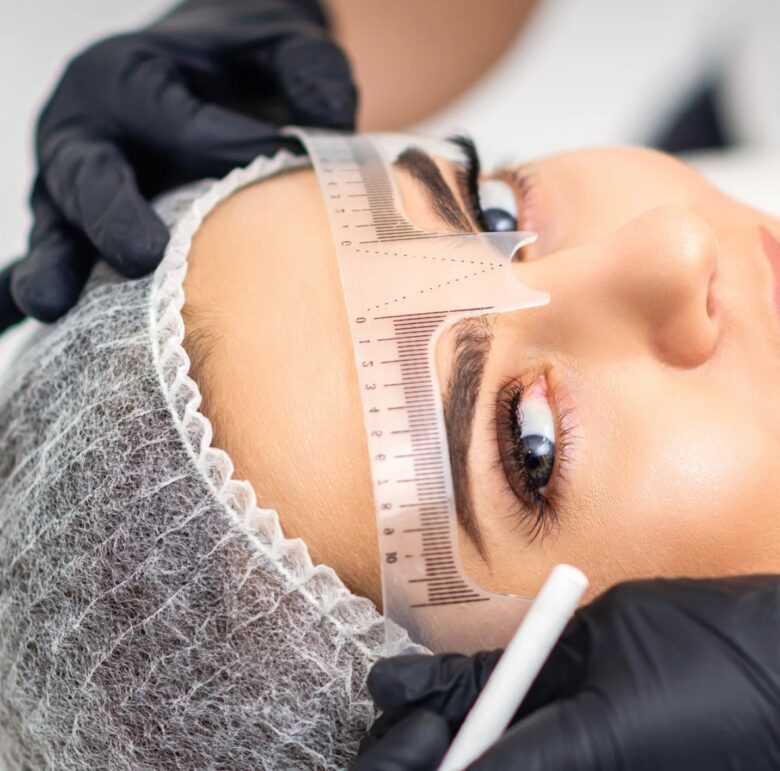Eyebrow enhancement procedures have gained significant popularity in recent years, with techniques like ombre microblading and ombre powder brows becoming increasingly sought after. In this article, we will explore and compare these two techniques to help you make an informed decision about which one may be the best fit for you.
Contents
- Understanding Ombre Microblading
- Exploring Ombre Powder Brows
- Comparing Techniques: Ombre Microblading vs Ombre Powder Brows
- Factors to Consider When Choosing Between Ombre Microblading and Ombre Powder Brows
- Pain and Discomfort
- Healing Process and Aftercare
- Potential Risks and Complications
- Expert Insights and Professional Recommendations
- Real-Life Examples and Case Studies
- Conclusion
Understanding Ombre Microblading
This is a technique that uses a manual handheld tool to create fine hair-like strokes, gradually transitioning from a lighter shade at the front of the eyebrows to a darker shade towards the tail. The process involves depositing pigment into the upper layers of the skin, resulting in natural-looking, defined eyebrows.
One of the primary advantages of ombre microblading is the ability to create a more subtle and realistic appearance, mimicking the look of natural eyebrow hair. It is suitable for various skin types and can be customized to achieve the desired shape and fullness. Ombre microblading typically lasts 1-2 years before a touch-up session is needed.

Source: beautybabeclub.com
Exploring Ombre Powder Brows
It is also known as shading or soft powder brows, involves a different technique and produces a slightly different result. Instead of creating individual hair-like strokes, this technique uses a stippling method to achieve a soft, powdered effect. The pigment is implanted into the skin in a more gradual and uniform manner, creating a gradient from lighter to darker shades.
Ombre powder brows offer a more defined and filled-in look compared to ombre microblading. They are particularly suitable for clients who desire a bolder brow appearance or have sparse or uneven eyebrow hair. It’s tend to last longer than microblading, with results lasting up to 2-3 years before a touch-up is needed.
Comparing Techniques: Ombre Microblading vs Ombre Powder Brows
The primary difference between ombre microblading and ombre powder brows lies in the application of pigment and the resulting effect:
- Pigment Application and Gradient Effect: Ombre microblading focuses on creating individual hair-like strokes, resulting in a more natural and realistic appearance. Ombre powder brows, on the other hand, create a soft, powdered effect with a more defined and filled-in look.
- Longevity and Fade-out Process: Ombre microblading tends to fade more gradually and naturally, blending with the surrounding eyebrow hair. Ombre powder brows may fade into a softer shade over time, but the overall shape and definition remain intact for a longer duration.

Source: canva.com
Factors to Consider When Choosing Between Ombre Microblading and Ombre Powder Brows
When deciding between these two techniques, several factors should be considered:
- Personal Preferences and Desired Aesthetic Outcomes: Consider whether you prefer a more natural, hair-like appearance (ombre microblading) or a more defined and filled-in look (ombre powder brows).
- Skin Type and Sensitivity: Certain skin types, such as oily or sensitive skin, may respond differently to each technique. Consult with a professional to determine which technique is best suited for your specific skin type.
- Lifestyle and Maintenance Requirements: Consider your lifestyle and how much time and effort you are willing to invest in maintaining your eyebrows.
Pain and Discomfort
Both ombre microblading and ombre powder brows are popular eyebrow enhancement techniques that involve depositing pigment into the skin using a handheld tool. The level of pain or discomfort experienced during these procedures can vary based on individual pain tolerance.
Ombre microblading, which creates individual hair-like strokes, may result in slightly more discomfort as tiny incisions are made in the skin. Some clients may liken the sensation to minor scratches or pinpricks. Conversely, ombre powder brows, using a gentler stippling method, may be perceived as less painful and invasive.
To ensure a comfortable experience, numbing creams or topical anesthetics are typically applied before the treatment. These help reduce any pain or sensitivity during the process. Communication with the microblading artist is essential, as they can make adjustments to ensure the client’s comfort.

Source: canva.com
Healing Process and Aftercare
After both procedures, there is a healing process to achieve optimal results. Initially, the treated area may appear darker and more intense, but this is a normal part of the healing process as the pigmented area forms a scab that eventually falls off, revealing the softened final color.
Following aftercare instructions provided by the microblading artist is crucial during the healing process. These may include avoiding excessive touching, keeping the area clean and dry, and refraining from using makeup or other skincare products. Sun exposure and activities causing excessive sweating should also be limited.
Potential Risks and Complications
Although generally safe, both techniques come with potential risks. Infection is a risk if the treated area isn’t properly cared for during healing. To reduce this risk, keeping the area clean and following aftercare instructions is essential.
Allergic reactions to the pigments used are rare but possible. Informing the microblading artist about known allergies is important to prevent adverse reactions.
Over time, color changes or pigment fading may occur due to factors like skin type, sun exposure, and the body’s natural healing process. Touch-up sessions may be required to maintain the desired appearance.
Choosing a qualified and experienced microblading artist is crucial in minimizing risks and achieving the best results. Conduct thorough research, read reviews, and ask for before-and-after photos to ensure you choose a reputable professional.
Expert Insights and Professional Recommendations
Consulting with experienced microblading artists is crucial when deciding between ombre microblading and ombre powder brows. They can provide personalized recommendations based on your individual needs and preferences. During the consultation process, factors such as your natural eyebrow hair, facial features, and desired style will be taken into account.

Source: canva.com
Real-Life Examples and Case Studies
To help visualize the differences between ombre microblading and ombre powder brows, before and after photos of clients who underwent each technique can be showcased. Client testimonials and satisfaction rates can also provide valuable insights into the experiences and outcomes associated with each technique.
Conclusion
Ombre microblading and ombre powder brows are two popular techniques for achieving beautifully enhanced eyebrows. Understanding the differences between these techniques and considering factors such as personal preferences, skin type, and desired outcomes are essential when making a decision.
Consulting with a professional microblading artist is highly recommended to ensure that you receive personalized advice and achieve the desired results. Both techniques offer the potential for transformative and natural-looking eyebrows, providing you with enhanced confidence and facial harmony.
